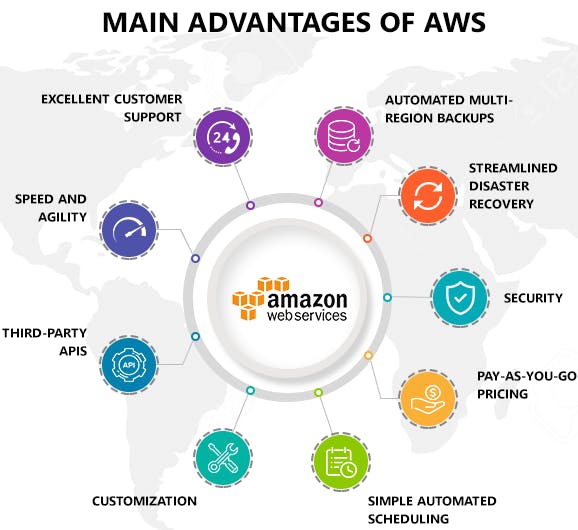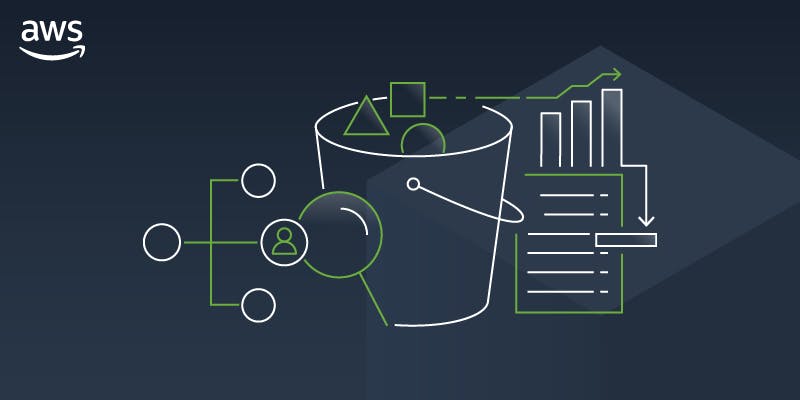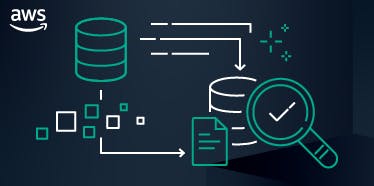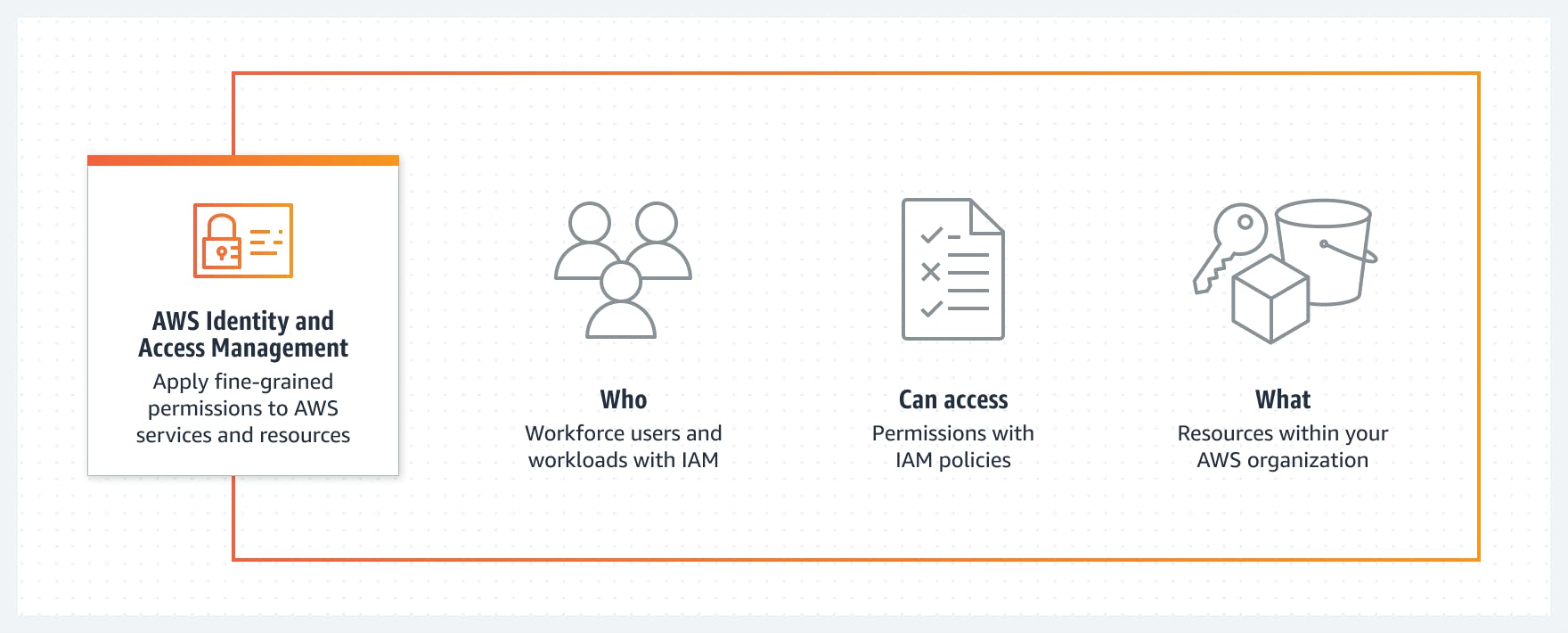Hello there! Currently, AWS is used by a wide variety of organizations and companies. The technical industry is heavily dependent on AWS. Be it hosting the application, usage of databases, content delivery, or security every service is available on AWS. In this blog, we will dive into the basics of AWS.
What is AWS?
AWS stands for Amazon Web Services. It is a secure cloud services platform. It leads the industry in Platform as a Service (PaaS) and Infrastructure as a Service (IaaS) and provides a variety of remote cloud services. It provides more than 200 fully featured services from data centers located all over the world and is the world's most comprehensive cloud platform.

AWS offers you all the necessary tools you would need to set up your IT infrastructure, without buying anything. It provides scalable and cost-effective cloud computing solutions. It was launched in the year 2002.
What AWS has to offer?
For cloud applications, AWS offers a wide range of services and functionalities to help organizations scale up. It is based on the pay-as-you-go model. It enables you to choose your ideal options while only paying for the services you use. AWS is cost-effective, which means it helps you save money without sacrificing the application speed or user experience.

AWS offers the following services:
Compute
AWS Compute services help developers build, deploy, and scale an application in the cloud platform.

Some examples of AWS compute services are:
EC2 (Elastic Compute Cloud)
Lambda
Fargate
Lightsail
Outposts
Networking and Content Delivery
It offers a highly secure cloud platform and connects your physical network to a private virtual network with a high transfer speed.

Some examples of AWS networking services are:
Route 53
VPC (Virtual Private Cloud)
Cloudfront
Direct Connect
API Gateway
Storage
Data storage services for the web are offered by AWS. It also provides the benefit of catastrophe data recovery with excellent durability.

Some examples of AWS storage services are:
S3 (Simple Storage Service)
EBS (Elastic Block Store)
EFS (Elastic File System)
Backup
Database
Database instances that are affordable, extremely secure, and scalable are available through the AWS database service.

Some examples of AWS database services are:
RDS (Relational Database Service)
Aurora
DynamoDB
DocumentDB
ElastiCache
Analytics
AWS analytics service provides an easy way to extract data insights and perform analysis on data.

Some examples of AWS analytics services are:
Redshift
Athena
Kinesis
Glue
Development
Development services enable users to automatically develop, deploy, and run application source code. Additionally, it adjusts the workload for the server and instance.

Some examples of AWS development services are:
Cloud9
CodeCommit
CodeBuild
CodeDeploy
CodeStar
Machine Learning
Users can build machine learning solutions using this service.

Some examples of AWS machine learning services are:
SageMaker
Rekognition
Comprehend
Polly
Security
By granting a restricted amount of access to a selected group of users, it aids in maintaining a secure environment for your AWS resources.

Some examples of AWS security services are:
IAM (Identity Access Management)
Shield
Macie
KMS (Key Management Service)
I will explain some of the services below that are commonly used and are mostly available in your free-tier plan.
EC2 (Elastic Compute Cloud)

Amazon Elastic Compute Cloud, EC2 is a service that provides resizable computing services in the cloud.
It allows you to rent and manage virtual servers in the cloud.
EC2 instances are virtual servers running on physical servers.
EC2 can be used to deploy applications.
It offers various instance types to developers so that they can choose required resources such as CPU, memory, storage, and networking capacity based on their application requirements.
A preconfigured template called an Amazon Machine Image can be used to launch an instance easily.
It provides load balancing and autoscaling features.
Route 53

Route 53 is a DNS service that routes users to applications.
It is a web service with a highly available Domain Name System (DNS).
It automatically configures DNS settings for your domains.
It also performs health checks on resources.
It efficiently links user queries to infrastructure that is hosted by Amazon Web Services (AWS), such as EC2 instances, Elastic Load Balancing load balancers, or Amazon S3 buckets, and it can also be used to direct users to infrastructure that is not hosted by AWS.
S3 (Simple Storage Service)

Amazon Simple Storage Service (S3) is a scalable storage service offered by AWS.
It stores files in the form of objects, and each object can be of size 5 TB maximum.
The objects (files) are stored in buckets (directories).
S3 is a regional service but has a global namespace, i.e., the name of your S3 object should be unique.
It provides availability and durability features.
S3 buckets have use cases in static websites, mobile applications, data archives and analytics systems.
RDS (Relational Database Service)

Relational Database Service is a managed distributed relational database cloud service that helps developers to operate and simply scale a database such as Aurora, MySQL and PostgreSQL.
It can do various automated tasks, such as security patches, backups, etc.
It provides cost-efficient and resizable capacity while automating time-consuming administration tasks such as hardware provisioning, database setup, patching and backups.
IAM (Identity Access Management)

Identity Access Management is a framework that helps in securely maintaining access to AWS services.
It allows the owner to control access to users in the AWS ecosystem.
It helps to dynamically give granular access to AWS resources.
An organization doesn't need 2-3 AWS accounts, it can just have one AWS account and can have multiple people use that with some restrictions to use resources.

I hope that I was able to provide a basic overview of some AWS services to you. I'll be back with more blogs on AWS soon and you will get to know about the services in more detail in upcoming blogs. Until then, bye bye and take care!